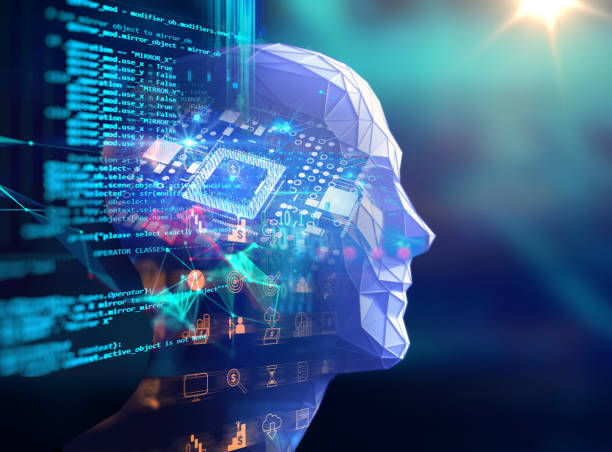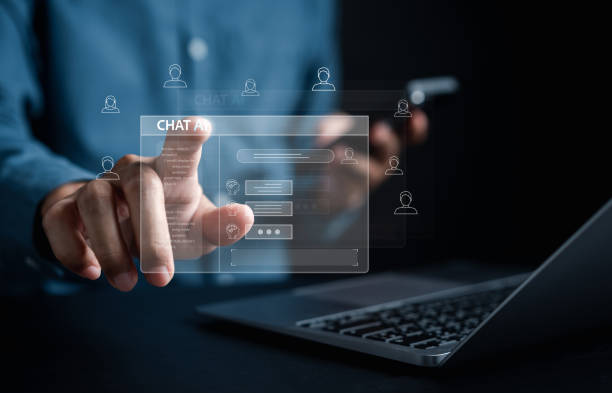What is an Artificial Intelligence Robot and How Does It Work?
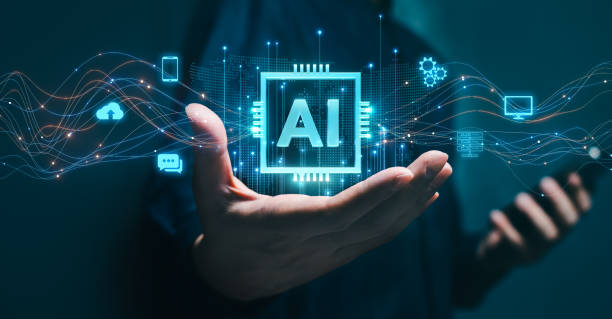
#Artificial intelligence robot is a combination of robotics and artificial intelligence, designed to perform various tasks automatically.
These robots, using machine learning algorithms and natural language processing, are able to understand the environment, make decisions and take appropriate actions.
The main function of artificial intelligence robots is based on receiving data through sensors, processing this data by artificial intelligence algorithms, and performing physical or virtual operations through actuators.
This process allows the robot to perform complex tasks independently and with minimal human intervention.
Artificial intelligence allows robots to learn from their experiences and improve their performance.
Artificial intelligence robots are used in various industries including manufacturing, healthcare, customer service and education.
These robots are capable of performing tasks such as quality inspection, precise surgery, answering customer questions, and providing personalized training.
With the advancement of technology, artificial intelligence robots are becoming more complex and efficient and play a more important role in our daily lives.
Using artificial intelligence robots can help improve productivity, reduce costs and increase the quality of services.
Does your current company website not reflect your brand’s credibility and power as it should? Rasaweb solves this challenge for you with professional company website design.
✅ Increase the credibility and trust of visitors
✅ Attract more targeted customers
⚡ Click for a free consultation!
Types of Artificial Intelligence Robots and Their Applications
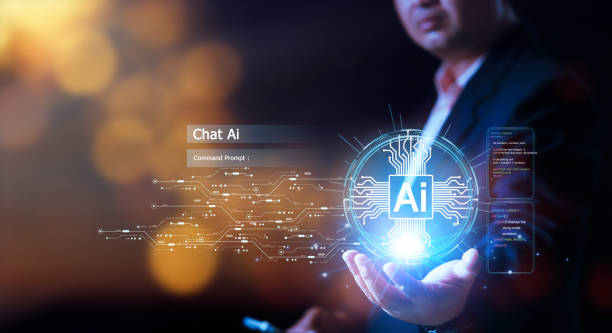
Artificial intelligence robots are designed and manufactured in various types, each suitable for specific applications.
Some of the common types of these robots are industrial robots, service robots, medical robots and military robots.
Industrial robots are used to perform repetitive and heavy tasks on production lines.
These robots usually have high accuracy and speed and can help improve productivity and reduce human errors.
Service robots are used to provide services to customers in various environments such as hotels, restaurants and hospitals.
These robots can perform tasks such as delivering food, cleaning and answering customer questions.
Medical robots are used to perform precise surgeries, help rehabilitate patients and provide remote medical care.
These robots usually have advanced sensors and cameras that allow surgeons to perform surgery with greater precision.
Military robots are used to perform tasks such as reconnaissance, bomb disposal and transportation of equipment.
These robots usually have high resistance to harsh conditions and can operate in dangerous environments.
Artificial intelligence robot, depending on their type and application, can help improve our lives in many areas.
Benefits of Using Artificial Intelligence Robots in Various Industries
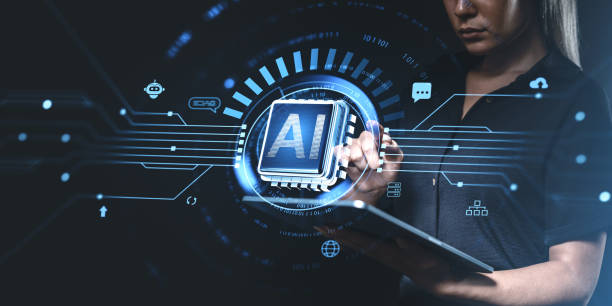
The use of artificial intelligence robots in various industries has many benefits.
One of the most important benefits is increased productivity and reduced costs.
Robots can perform repetitive and tedious tasks with greater accuracy and speed than humans, which leads to increased production and reduced human errors.
Another advantage is the improved quality of products and services.
Using advanced sensors and cameras, robots can continuously monitor the quality of products and prevent defects.
Artificial intelligence robots can also work in dangerous and harsh environments, which can help protect the safety of employees.
The use of artificial intelligence robots can also help reduce energy and raw materials consumption.
Robots can help conserve natural resources by optimizing processes and reducing waste.
Artificial intelligence robots can help provide better and faster services to customers.
Robots can answer customer questions, register orders and solve problems.
Finally, using artificial intelligence robot can help improve the competitiveness of companies and increase their profitability.
This emerging technology creates new opportunities for innovation and development in various industries.
| Industry | Benefits |
|---|---|
| Manufacturing | Increased productivity, reduced costs, improved quality |
| Services | Providing better services, faster response, reducing errors |
| Healthcare | More precise surgery, better rehabilitation, remote care |
| Military | Performing dangerous tasks, identifying threats, transporting equipment |
Challenges of Implementing Artificial Intelligence Robots
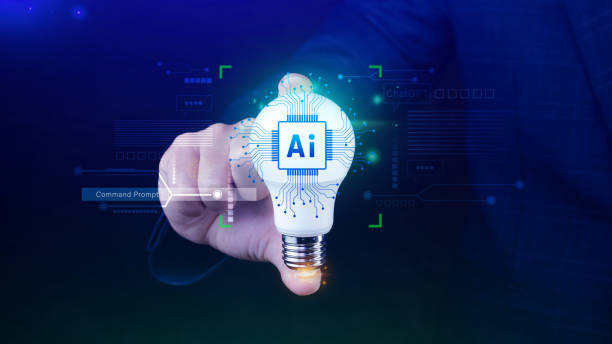
Implementing artificial intelligence robots also comes with challenges.
One of the most important challenges is the high cost of developing and deploying these robots.
Artificial intelligence robots are usually expensive and require suitable infrastructure for proper operation.
Another challenge is the need for high expertise and skills for designing, implementing and maintaining these robots.
Artificial intelligence robots are complex and require experts who are familiar with machine learning algorithms, natural language processing and robotics.
Another challenge is ethical and social issues related to the use of artificial intelligence robots.
Some people are concerned that robots can replace the human workforce and lead to increased unemployment.
Another challenge is concerns about privacy and data security.
Artificial intelligence robots usually collect and process a lot of data, which can lead to misuse of this data.
Despite these challenges, technological advances and researchers’ efforts are developing solutions to overcome these challenges.
Artificial intelligence robot, given their high potential, can play an important role in the future.
Are you tired of your company’s website not being seen as it should and losing potential customers? Solve this problem forever with professional and effective website design by Rasaweb!
✅ Increase brand credibility and gain customer trust
✅ Attract targeted sales leads
⚡ Contact us now for a free consultation!
The Future of Artificial Intelligence Robots
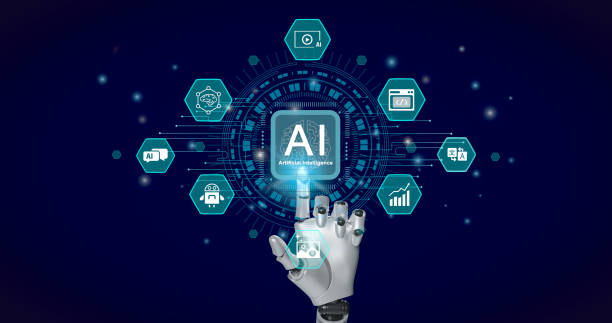
The future of artificial intelligence robots is very bright and full of new possibilities.
With the advancement of technology, robots are expected to become smarter, more efficient and cheaper.
Artificial intelligence robots will be able to perform more complex tasks and will be used in more industries.
In the future, robots can play a more important role at home, at work and in society.
Robots can help the elderly and people with disabilities, provide educational and health services, and participate in managing cities and public transportation.
Advances in deep learning, natural language processing and machine vision allow robots to understand their environment more accurately, make better decisions, and communicate more naturally with humans.
Artificial intelligence robots can help solve complex global problems such as climate change, resource scarcity and infectious diseases.
However, it is necessary to seriously examine the ethical and social issues related to the use of artificial intelligence robots to prevent the misuse of this technology.
Artificial intelligence robot has a high potential to improve our lives, but it is necessary to use it carefully and responsibly.
Machine Learning and Its Role in the Development of Artificial Intelligence Robots

Machine learning is one of the main pillars of the development of artificial intelligence robots.
Machine learning algorithms allow robots to learn from data and improve their performance.
Without machine learning, robots can only perform tasks that are explicitly programmed for them.
But using machine learning, robots can learn new tasks, adapt to unexpected conditions, and make smarter decisions.
There are different types of machine learning algorithms, each suitable for specific applications.
Supervised learning, unsupervised learning, and reinforcement learning are among the common methods in this field.
Supervised learning allows robots to learn patterns and make accurate predictions using labeled data.
Unsupervised learning allows robots to discover patterns in unlabeled data and identify hidden structures.
Reinforcement learning allows robots to learn by interacting with their environment and find optimal behaviors.
Advances in deep learning allow robots to perform more complex tasks such as face recognition, natural language processing, and self-driving.
Artificial intelligence robot using machine learning can continuously improve and play a more important role in our lives.
Natural Language Processing and Human Interaction with Robots
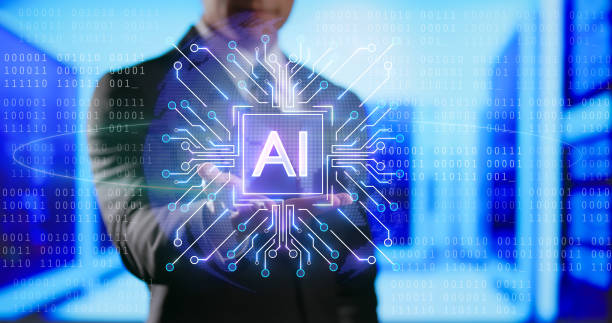
Natural language processing (NLP) is another key technology in the development of artificial intelligence robots.
NLP allows robots to understand human language, respond, and communicate more naturally with humans.
Without NLP, interaction with robots will be difficult and unnatural.
NLP allows robots to understand questions, execute commands, and provide information.
There are different types of NLP algorithms, each suitable for specific applications.
Text analysis, speech recognition, and text generation are among the common methods in this field.
Text analysis allows robots to understand the structure and meaning of text.
Speech recognition allows robots to convert human speech into text.
Text generation allows robots to produce natural and coherent texts.
Advances in deep learning allow robots to understand human language more accurately and provide more appropriate responses.
Artificial intelligence robot using NLP can communicate more effectively with humans and provide better services.
| Technology | Application |
|---|---|
| Text Analysis | Understanding the structure and meaning of text |
| Speech Recognition | Converting speech to text |
| Text Generation | Producing natural texts |
The Role of Sensors and Actuators in the Performance of Artificial Intelligence Robots
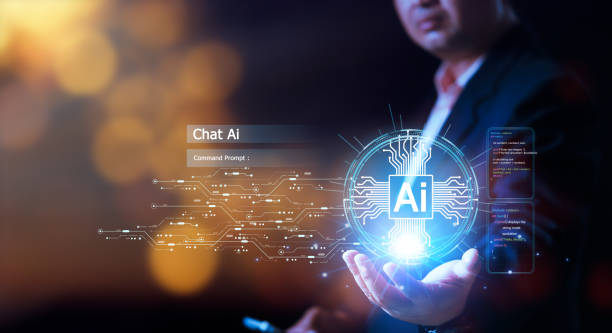
Sensors and actuators are vital components of artificial intelligence robots that allow robots to interact with their environment.
Sensors collect information from the environment and transfer it to the robot.
Actuators allow the robot to affect the environment.
There are different types of sensors, each designed to collect specific information.
Cameras, microphones, temperature sensors, pressure sensors and proximity sensors are among the common sensors in robots.
Cameras allow robots to see images and recognize the environment.
Microphones allow robots to hear sounds and understand voice commands.
Temperature sensors allow robots to measure temperature.
Pressure sensors allow robots to measure pressure.
Proximity sensors allow robots to measure their distance from other objects.
Actuators also come in different types, each designed to perform specific operations.
Motors, pumps, valves and robotic arms are among the common actuators in robots.
Motors allow robots to move.
Pumps allow robots to pump fluids.
Valves allow robots to control the flow of fluids and gases.
Robotic arms allow robots to pick up, move and manipulate objects.
Artificial intelligence robot using sensors and actuators can interact with their environment and perform various tasks.
Are you worried about the low conversion rate of your online store and not getting the sales you want?
Rasaweb is your expert solution for having a successful online store.
✅ Significant increase in conversion rate and sales
✅ Professional and user-friendly design to satisfy customers
⚡ Are you ready for a transformation in online sales? Get a free consultation!
The Impact of Artificial Intelligence Robots on the Labor Market
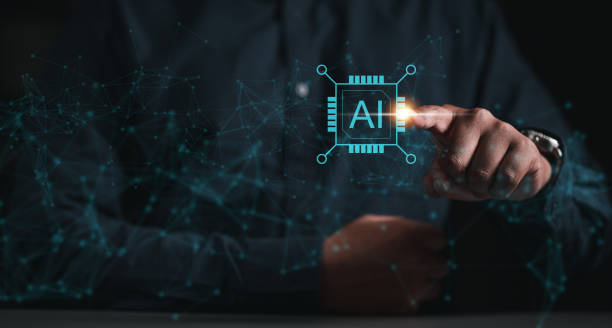
The widespread use of artificial intelligence robots will have significant impacts on the labor market.
On the one hand, robots can replace the human workforce in some jobs, especially in repetitive, tedious and dangerous jobs.
This can lead to increased unemployment in some sectors.
On the other hand, robots can also create new job opportunities.
The development, implementation and maintenance of robots require new specialists who are familiar with machine learning algorithms, natural language processing and robotics.
In addition, robots can increase productivity and efficiency, which can lead to economic growth and the creation of new job opportunities in other sectors.
To face the challenges caused by automation, it is necessary to adopt appropriate educational and labor market policies.
Training new skills, supporting entrepreneurship and creating social safety nets are among the measures that can help reduce the negative effects of automation on the labor market.
Artificial intelligence robot, given their high potential, can play an important role in the transformation of the labor market, but it is necessary that this transformation is managed and takes into account its social effects.
Ethical Issues Related to Artificial Intelligence Robots
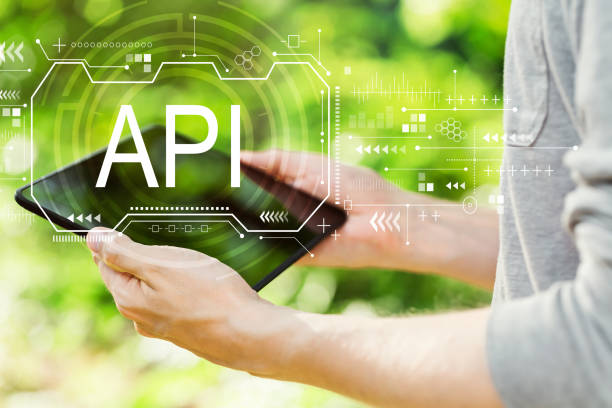
The development and use of artificial intelligence robots raises important ethical issues that need to be seriously considered.
One of the most important ethical issues is accountability for the actions of robots.
If a robot causes harm, who is responsible? Is it the robot’s manufacturer, the robot’s owner, or the robot itself?
Another issue is privacy and data security.
Artificial intelligence robots usually collect and process a lot of data, which can lead to misuse of this data.
Another issue is discrimination and inequality.
If robots are trained based on discriminatory algorithms, they can make decisions that lead to discrimination and inequality.
Another issue is independence and control.
Should robots be completely independent or should they be controlled by humans? Advances in artificial intelligence allow robots to make more complex decisions and act more independently, which can lead to concerns about control and safety.
It is necessary to develop appropriate ethical and legal frameworks for the development and use of artificial intelligence robots to prevent the misuse of this technology and preserve human rights and values.
Artificial intelligence robot, given their high potential, can play an important role in the future, but it is necessary that ethical issues related to them are seriously considered.
Frequently Asked Questions
| Row | Question | Answer |
|---|---|---|
| 1 | What is an Artificial Intelligence Robot? | An artificial intelligence robot is a machine that is capable of understanding, reasoning, learning, and problem-solving and can perform complex tasks with relative autonomy. |
| 2 | What are the most important applications of artificial intelligence robots? | The main applications include industrial production, customer service (chatbots), medicine and surgery, self-driving transportation, space exploration, and military affairs. |
| 3 | What is the main difference between an artificial intelligence robot and a regular robot? | A regular robot only follows programmed instructions, while an artificial intelligence robot can learn from data, make decisions, and adapt to new environments. |
| 4 | How do artificial intelligence robots learn? | They learn through machine learning algorithms (such as deep learning, reinforcement learning) and processing vast amounts of data, identifying patterns, and improving their performance. |
| 5 | Can artificial intelligence robots have feelings? | Currently, artificial intelligence robots do not have real feelings in the human sense. They can mimic or recognize emotions, but they do not understand or experience them. |
| 6 | What are the current limitations of artificial intelligence robots? | The limitations include the need for a lot of data, the inability to understand abstract concepts, the lack of real creativity, ethical issues, and the challenges of generalizability in new environments. |
| 7 | What is the role of artificial intelligence in the development of humanoid robots? | Artificial intelligence helps humanoid robots to walk, maintain their balance, understand their surroundings, interact with humans, and perform complex tasks. |
| 8 | How is the future of artificial intelligence robots predicted? | It is predicted that artificial intelligence robots will become smarter, more autonomous, and capable of performing more complex tasks in everyday life and industry, and their interaction with humans will increase. |
| 9 | Can artificial intelligence robots replace all human jobs? | It is unlikely that all human jobs will be replaced. Robots will take on many repetitive and dangerous tasks, but jobs that require creativity, empathy, and moral judgment will remain. |
| 10 | What ethical and social challenges are raised with the expansion of artificial intelligence robots? | The challenges include issues related to privacy, data security, ethical decision-making by robots, impact on employment, and accountability in case of errors. |
And other services of Rasa Web advertising agency in the field of advertising
Intelligent Custom Software: A new service to increase user engagement through user experience customization.
Intelligent Conversion Rate Optimization: A fast and efficient solution for managing campaigns with a focus on attractive user interface design.
Intelligent Link Building: An effective tool to increase sales by optimizing key pages.
Intelligent Customer Journey Map: A dedicated service to increase click-through rate growth based on marketing automation.
Intelligent Custom Software: An effective tool for online growth by using real data.
And more than hundreds of other services in the field of internet advertising, advertising consulting and organizational solutions
Internet Advertising | Advertising Strategy | Advertorial
Sources
Artificial Intelligence Robots: Introduction, Applications and Future
,What is an Artificial Intelligence Robot? Everything About Artificial Intelligence Robots
,What is Artificial Intelligence and What are its Applications? — In Simple Language
,What is a Smart Robot? Introduction to Different Types and Applications
? Build the future of your business in the digital world with Rasa Web Afarin! Contact us today for professional company website design and launching targeted digital marketing campaigns.
📍 Tehran, Mirdamad Street, next to the Central Bank, South Kazerun Alley, Ramin Alley, No. 6

